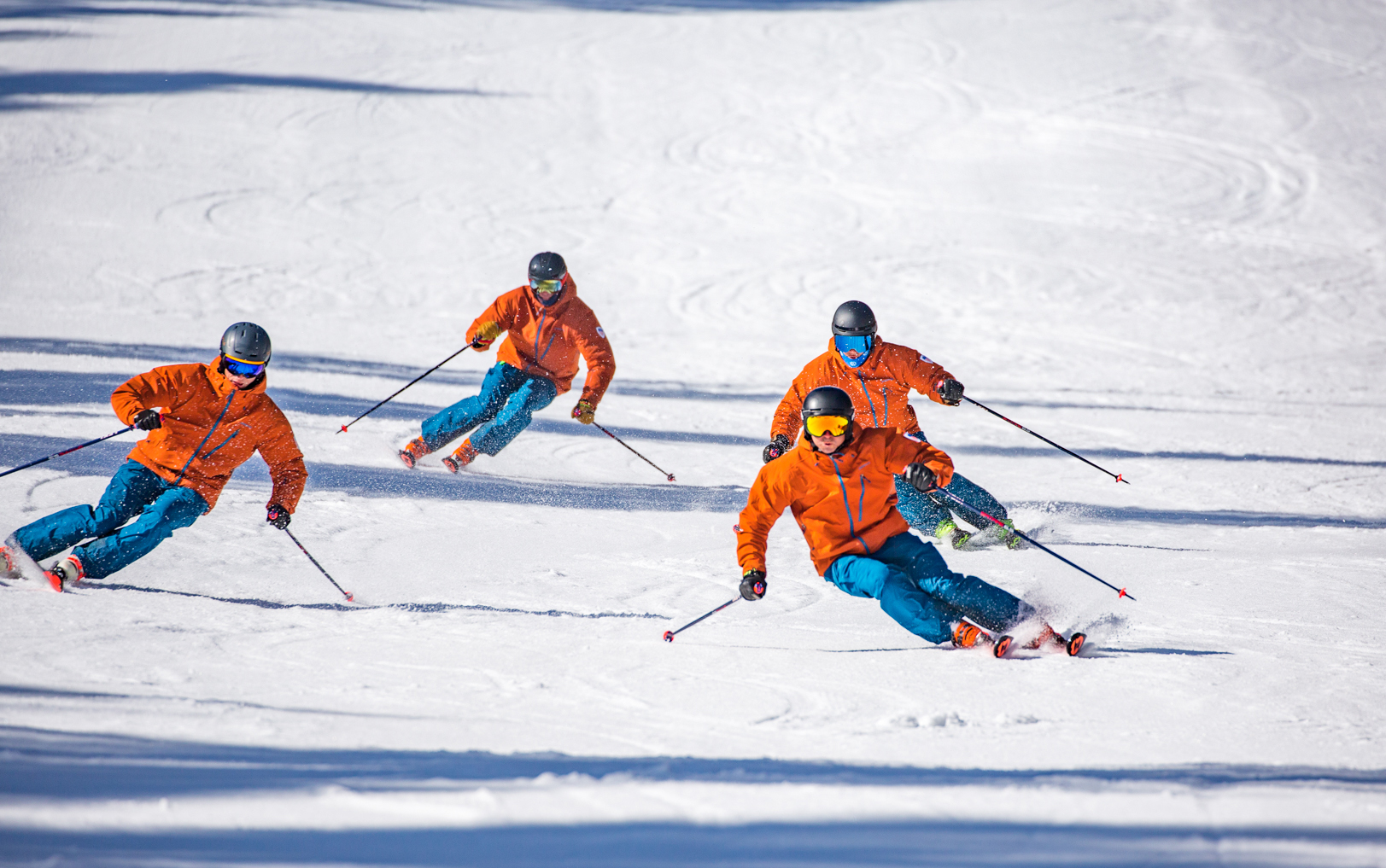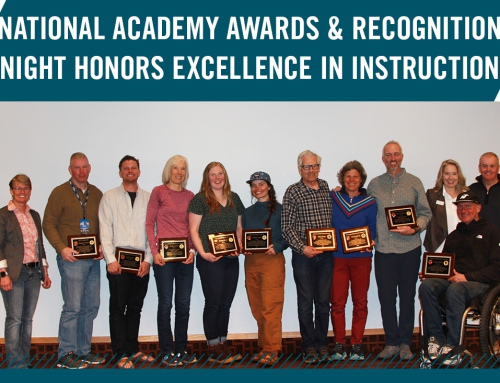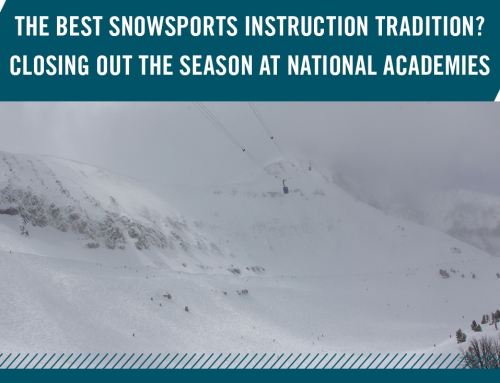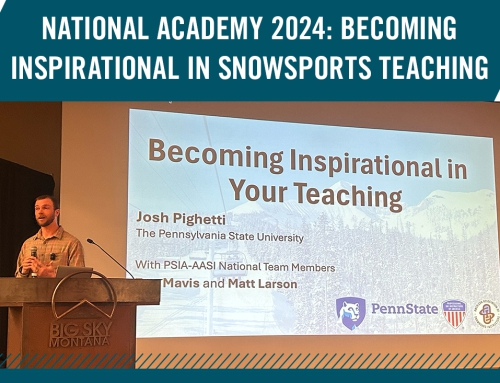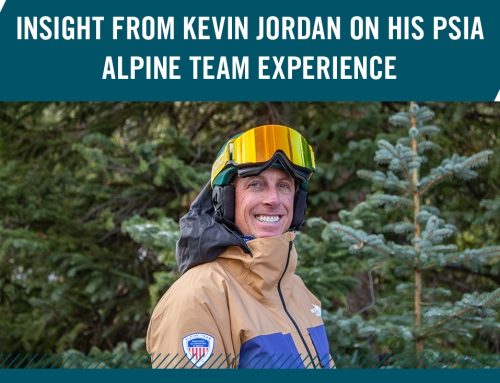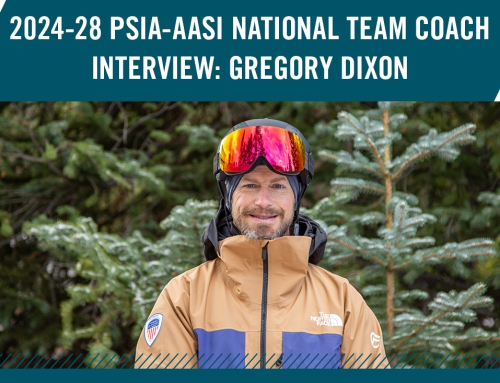Interski 2019 Day 3: Cooperation, Collaboration + the Value of Disagreement
If you watch the multi-colored collection of talented snow pros dive down the Demo Slope that waterfalls into the base of Pamporovo for more than a few minutes, you might think you were attending a kind of cliff-carving competition with points awarded for long arcs and fast feet.
But that would only be arcing the surface of what is really happening at Interski 2019 in Bulgaria, where the event has evolved into winter’s greatest symposium of snowsports teaching, and educational give-and-take.
 “It’s a real educational conference,” said PSIA-AASI Team Manager Jeb Boyd, standing outside the Pamporovo Convention Center as thought leaders from around the world walk by like they’re on campus, sharing ideas and checking notes. “People are here to collaborate, and work.”
“It’s a real educational conference,” said PSIA-AASI Team Manager Jeb Boyd, standing outside the Pamporovo Convention Center as thought leaders from around the world walk by like they’re on campus, sharing ideas and checking notes. “People are here to collaborate, and work.”
Once a kind of international Olympics, where nations tested the validity – and power – of their own proprietary techniques, Interski has turned into an almost completely collaborative event. As more leisure options have become available to people, the planet’s snow proprietors have increasingly banded together, realizing that in order to succeed they all have to offer a more compelling product.
“I think everyone realizes that to keep skiing and riding strong, we all have to work harder, and smarter,” Boyd said. “Which why I think the vibe is so strong here right now. Because everyone is excited to be a part of that.”
 One World, One Board
One World, One Board
Perhaps nowhere is that sense of stoke so condensed, and apparent, than among the snowboard participants. Sixty riders strong, the international collection of shredders has turned each morning of Interski into their own ride and thought-fest.
“It’s something that started in Ushuaia (at Interski 2015 in Argentina),” said AASI Snowboard Team member Tony Macri, “where we got together each morning to share ideas and then go out on the mountain for a few laps.”
 Only half-jokingly referred to internally by the riders as “Intershred,” this organic, daily carve-a-thon lets the snowboarders work together, while also celebrating what sets them apart.
Only half-jokingly referred to internally by the riders as “Intershred,” this organic, daily carve-a-thon lets the snowboarders work together, while also celebrating what sets them apart.
“It’s a chance for us to synthesize, and share where we are focusing in areas of education and experience,” Macri said. “Even a bad idea is a temperature piece, which helps us evaluate where we stand in terms of instruction’s cutting edge.”
One key component of conversation that first emerged in Argentina – and has come into clearer focus while boarding in the Balkans – is how many tools and opportunities snowboard instructors now have to combat the sport’s many misleading myths. The sophistication of step-in bindings, for example, means riders don’t have to strap in while sitting on their butts. And the success of Burton and AASI’s “Kids Can Snowboard” campaign makes it clear that groms no longer have to ski before they can shred.
 Most importantly, Macri said, is that everyone is checking their egos at the door, working together to celebrate education, and find new ways to lower the bar of entry for the riders and instructors who come next.
Most importantly, Macri said, is that everyone is checking their egos at the door, working together to celebrate education, and find new ways to lower the bar of entry for the riders and instructors who come next.
Echoing Boyd’s observation of the event, Macri said, “The vibe is really good!”
Common Problems, New Solutions
In the free-heel world, that sense of collaboration and give-and-take, can lead to new solutions in the unlikeliest of places. For PSIA Telemark Team member Grant Bishop, that included some very welcome Austrian insight.
 “We are working on some similar things, like creating a seamless transition between alpine and telemark skiing and teaching,” Bishop said. “But part of the Austrian presentation also included information about their focus to get young alpine racers out on telemark skis to help improve their race technique.”
“We are working on some similar things, like creating a seamless transition between alpine and telemark skiing and teaching,” Bishop said. “But part of the Austrian presentation also included information about their focus to get young alpine racers out on telemark skis to help improve their race technique.”
As the growth of telemark has stagnated or even plummeted in locked heel-focused countries where it once flourished (“Sound familiar?” Bishop joked), the sport’s educators in the cradle of alpine racing have seen a new opportunity in pitching free-heel as a teaching adjunct.
 “From the perspective of kids who race, they have seen that the crossover of tele to racing is particularly effective in turn initiation,” Bishop said, adding that free-heel’s especially clear delineation between lead and trailing ski helps young racers more clearly focus on the switch.
“From the perspective of kids who race, they have seen that the crossover of tele to racing is particularly effective in turn initiation,” Bishop said, adding that free-heel’s especially clear delineation between lead and trailing ski helps young racers more clearly focus on the switch.
That, of course, led to the Austrian presentation’s inclusion of the favorite subject of all telemark skiers everywhere – lead change, and where and how to best employ it.
“Interestingly, their lead change is similar to ours, with the center of mass between the feet,” Bishop.
 While that may be reassuring validation for how PSIA is presenting its telemark fundamentals, Bishop said one of the things he enjoys most about interacting with other snow pros at the international level is understanding what it is about each country that is different and unique.
While that may be reassuring validation for how PSIA is presenting its telemark fundamentals, Bishop said one of the things he enjoys most about interacting with other snow pros at the international level is understanding what it is about each country that is different and unique.
“Sometimes when you agree with each other,” Bishop said, “you might not learn as much.”
For more insights on Interski, listen to PSIA-AASI’s Dave Schuiling and Michael Rogan in First Chair podcasts (available on iTunes, Google Podcasts, or Soundcloud).
Get daily Interski 2019 updates here – with more news, photos, podcasts, and videos posted every day this week.
You can also follow PSIA-AASI’s official social media channels for real-time updates, daily news, videos, and pictures. Follow Facebook, Twitter, Instagram, and YouTube.

